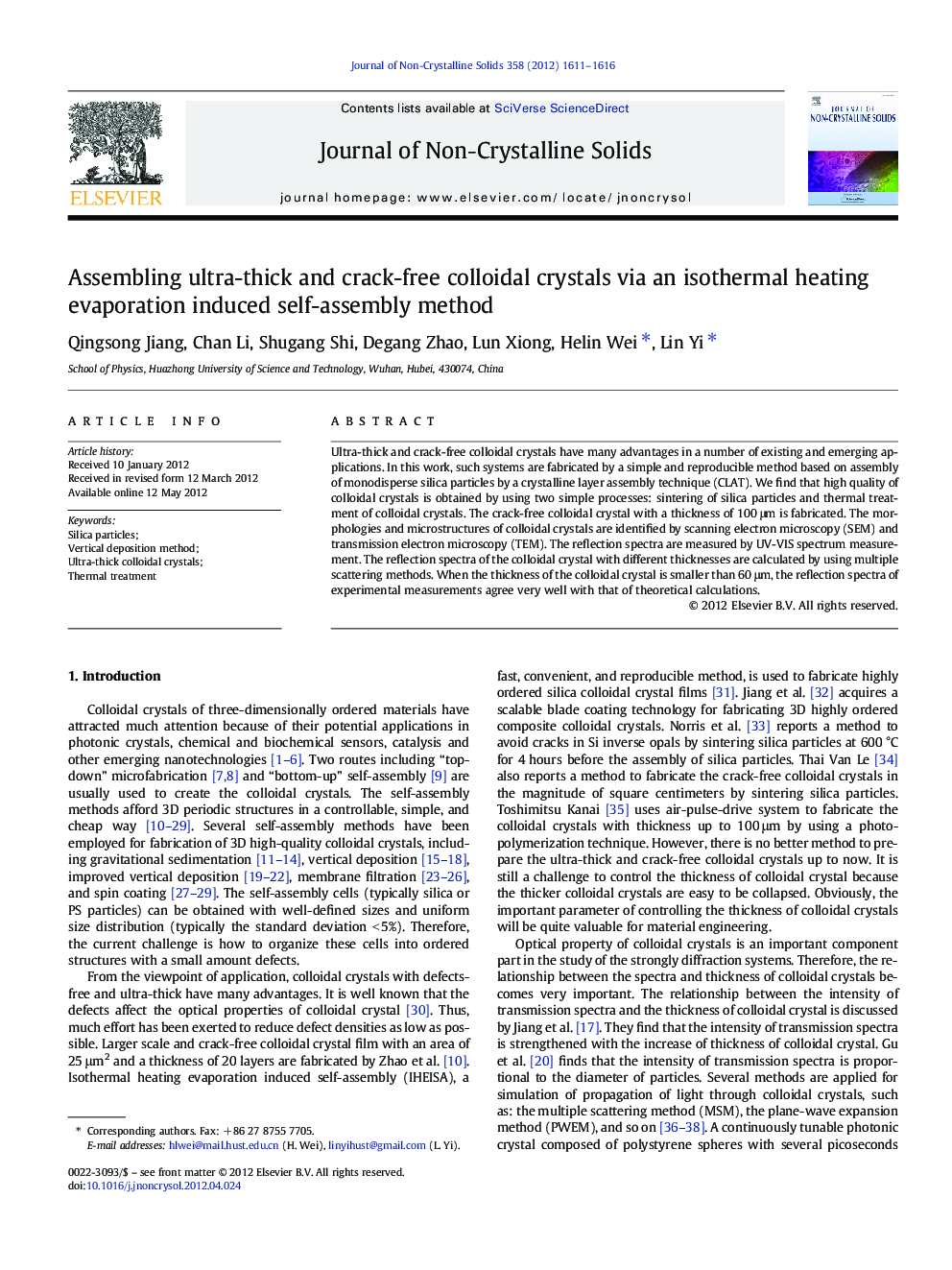| Article ID | Journal | Published Year | Pages | File Type |
|---|---|---|---|---|
| 1481821 | Journal of Non-Crystalline Solids | 2012 | 6 Pages |
Ultra-thick and crack-free colloidal crystals have many advantages in a number of existing and emerging applications. In this work, such systems are fabricated by a simple and reproducible method based on assembly of monodisperse silica particles by a crystalline layer assembly technique (CLAT). We find that high quality of colloidal crystals is obtained by using two simple processes: sintering of silica particles and thermal treatment of colloidal crystals. The crack-free colloidal crystal with a thickness of 100 μm is fabricated. The morphologies and microstructures of colloidal crystals are identified by scanning electron microscopy (SEM) and transmission electron microscopy (TEM). The reflection spectra are measured by UV-VIS spectrum measurement. The reflection spectra of the colloidal crystal with different thicknesses are calculated by using multiple scattering methods. When the thickness of the colloidal crystal is smaller than 60 μm, the reflection spectra of experimental measurements agree very well with that of theoretical calculations.
Graphical abstractThe ultra-thick and crack-free colloidal crystals are fabricated by using isothermal heating evaporation induced self-assembly. The thicknesses of colloidal crystals are up to 100 μm and controlled by layer-by-layer assembly.Figure optionsDownload full-size imageDownload as PowerPoint slideHighlights► Silica particles have been sintered before self-assembly. ► Colloidal crystals have been undergoing thermal treatment after each deposition. ► The crack-free colloidal crystals with thickness of 100 μm are fabricated. ► The ultra-thick colloidal crystals are fabricated by layer-by-layer assembly. ► The multiple scattering methods are used to simulate the reflection spectra.
